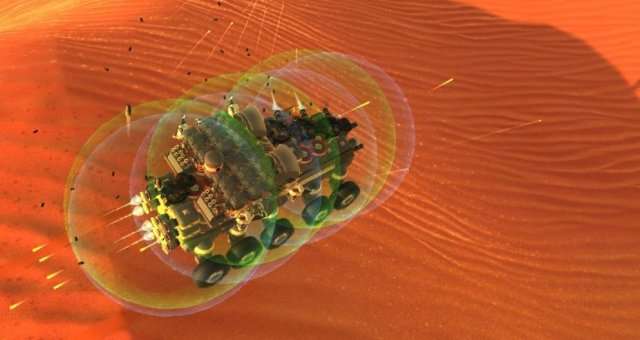
Today we focus on investigating all the methods of making power and compare how they work.
Batteries
Each of the five currently available corperations has a battery, how much can they store? and how tough are they?
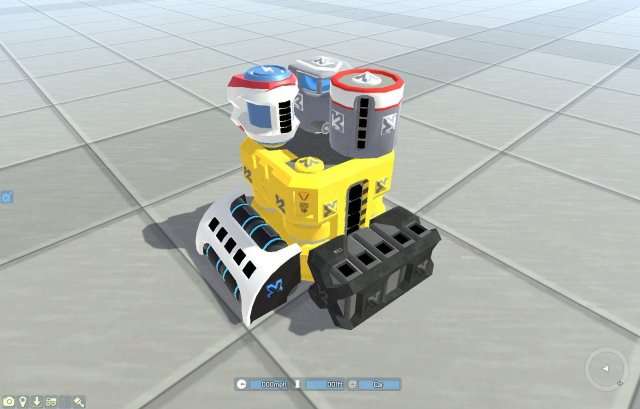
Here are some reference numbers, from each corperations 1×1 blocks, a burst gun was used to determine the health as it deals a rounded number worth of damage, and very low damage at that.
- Hawkeye: 0.31
- Better Future: 0.24
- GSO: 0.2
- Venture: 0.18
- Geocorp: 0.17 (1.35 per normal 2×2 block)
- Burst Gun Damage: 0.01
Batteries
GSO
- Capacity: 1.00
- Health: 0.2
- Build Points: 6
- Price: 660BB
- Price Per Capacity: 660BB
- Capacity Per Block: 1.00
Geocorp
- Capacity: 9.50
- Health: 1.00
- Build Points: 24
- Price: 5,946BB
- Price Per Capacity: 626BB
- Capacity Per Block: 1.1875
Hawkeye
- Capacity: 2.15
- Health: 0.62
- Build Points: 10
- Price: 2,658BB
- Price Per Capacity: 1,223BB
- Capacity Per Block: 1.075
Venture
- Capacity: 1.00
- Health: 0.16
- Build Points: 1
- Price: 1,194BB
- Price Per Capacity: 1,194BB
Better Future
- Capacity: 2.25
- Health: 0.39
- Build Points: 6
- Price: 2,466
- Price Per Capacity: 1,096BB
- Capacity Per Block: 1.125
To summarise batteries, the Geocorp battery offers the best value for money and most efficient in terms of capacity to space ratios, they are substantially more fragile than other batteries and will chain self-destruct the easiest.
The Hawkeye battery is the most durable battery per block BY FAR and will be a great choice if batteries are not significantly shielded in a combat tech, they are however the most expensive batteries
The GSO battery is very good as a middle ground between Hawkeye and Geocorp, being more durable than Geocorp and cheaper than Hawkeye.
The venture battery has no outstanding qualities and is outperformed in every regard by the identically sized GSO battery, with its only advantages being fractionally less self destruct damage and a tiny reduction in weight.
The Better Future battery is actually the worst one. It breaks down faster than the GSO battery, costs more for the same amount of power, and doesn’t even connect to things as well as the Hawkeye battery, even though they’re the same size. I thought the Better Future battery would at least be smaller for the amount of power it holds, since their solar panels are like that.
Wireless Chargers
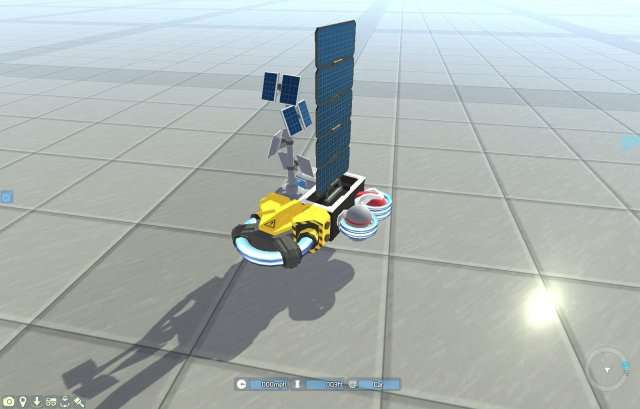
Wireless charging is really helpful for moving power around in Terratech. You can send power from one spot to another, even if they’re far apart. This makes it easy to build power lines that only go one way for big bases. You can also use it with an AI helper to give your vehicle extra batteries without putting them in danger.
So, lets work out what each of these does.
GSO
- Transfer Rate: 0.091B/s
- Transfer Range: 19.5 Blocks
- Health: 0.39
- Cost: 8,253BB
- Cable Cost (Cost/Distance): 423.23BB/block
- Cable Strength (Power*Distance): 1.7745
Venture
- Transfer Rate: 0.16B/s
- Transfer Range: 9.5 Blocks
- Health: 0.24
- Cost: 13,584BB
- Cable Cost (Cost/Distance): 1429.89BB/block
- Cable Strength (Power*Distance): 1.52
Geocorp
- Transfer Rate: 0.0416B/s
- Transfer Range: 39.5 Blocks
- Health: 0.77
- Cost: 12,843BB
- Cable Cost (Cost/Distance): 325.14BB/block
- Cable Strength (Power*Distance): 1.6432
Unlike batteries when a few circumstances can lead to different choices, when it comes to wireless charging there is one outstanding and clear winner, the GSO wireless charger, having more than double the relative health of the Geocorp charger, its stronger than the venture one in strength, more than four times more cost effective than it, is far easier to obtain in campaign mode (and in higher quantities) than the Geocorp one, its initial cost for a small base is lower.
It can be said that the only exception would be if you wanted to charge a hovercraft, but anchored blocks can seemingly hold an infinite weight, so it still works out better to just stack up some blocks and use GSO ones, if it really is a problem parking close enough to them, this rare occasion could call for Geocorp wireless chargers
Some other things to note, it does appear there is no latency with wireless charging (no power is lost when transferring) however when using lots of them, sometimes power can seem to be lost if two sources are passing power between them, make sure not to connect two items with passive chargers!
Generators and Solar Panels
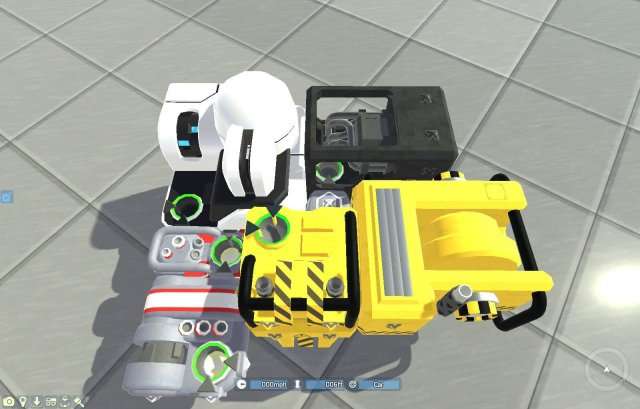
When considering to build a base, or carry a portable source of power, you need to know what generators can do, this section will cover renewables and non-renewables.
Renewables
GSO Solar Panel
- Cost: 1,149BB
- Output: 0.056B/s
- Cost to achieve 1B/s: 20,682BB
- Limitation: Daytime only
Strength: Best value for money power option in the game by far.
Geocorp Geothermal Generator
- Cost: 1,890BB
- Output: 0.22B/s
- Cost to achieve 1B/s: 9,450BB (N/A in a real scenario)
- Limitation: Needs a geothermal vent on a mountain
Strength: Excellent early game option, usage limitations do prevent it from beating the GSO solar panel in the late game, though it is still a good all rounder if you plan on building a base in the hilly Biome.
Better Future Solar Panel
- Cost: 3,213BB
- Output: 0.125B/s
- Cost to achieve 1B/s: 25,704BB
- Limitations: No anchor, Daytime only
Strength: Its the strongest renewable, though it is not as cost efficient as GSO it provides less lag for giant bases and begins power production at twice the rate of GSO, you will probably use these the most out of any power generation option.
Non-Renewables
GSO Anchored Generator
- Cost: 1,389BB
- Fuel Cost: 225BB
- Output: 0.7B/s
- Total Output: 13.25B (19s)
Geocorp Anchored Generator
- Cost: 1,308BB
- Fuel Cost: 225BB
- Output: 0.324B/s
- Total Output: 19.45B (60s)
Strengths: Best Generator for efficiency, though only by 10% overall compared to a better future plasma generator, (40% on raw cost efficiency) though its low rate of generation can hamper it compared to the renewable options, with one Carbius fuel rod costing BB1800, over a long period of play, it will be out performed by renewable options, and is comparable to a geothermal generator, which does not cost anything to use.
For Context, in just an hours use, solar panels will permanently generate more power (with fuel costs alone). However this generator does provide a realistic option to get through the night without losing as much power, BB1800 per night is generally quite affordable, when even high level techs can drop 10-15KBB each in the late game.
Better Future Plasma Generator (Celestian Fuel)
- Cost: 2,778BB
- Fuel Cost: 720BB
- Output: 1.25B/s
- Total Output: 16.4B (13s)
- Limitations: Low efficiency
Strengths: Turns waste into power, if you do not need money, and quite efficiently at that, works extremely well with cheaper fuels too.
With Carbius (common fuel) as fuel
- Fuel Cost: 270BB
- Output: 0.55B/s
- Total Output: 8.25B (15s)
With Erudian as fuel
- Fuel Cost: 699BB
- Output: 1.17B/s
- Total Output: 16.4B (14s)
Note: this still works out better than buying Fibron with the sold Ingots/crystals at teir 3
With a Fibron Stick as fuel
- Fuel Cost: 216 Total (27 each)
- Output: 0.445B/s
- Total Output: 13.35B (30s)
Strengths: Produces power from things which are not normally fuel, any waste can be recycled for fuel, Extremely good option with Fibron due to the nature of its scaling, its actually very efficient despite what the tooltip may imply as its actually more efficient than the GSO anchored generator.
Overall, if you need to make power or have some sort of an emergency generator for when under attack, the plasma generator takes this roll on with pride, it generates power at the fastest rate with Celestian, and offers a good option with Fibron if you do not need much fed into your defence, unlike the GSO one though, it can make fuel with anything you have lying around, so you will always be prepared.
Mobile Generators
GSO Mobile Generator
- Cost: 12,582BB
- Fuel Cost: 225BB
- Output: 0.35B/s
- Total Output: 6.25B (18s)
- Strength: Faster than the Hawkeye one, though less cost efficient if used to offset power drain.
Hawkeye Mobile Generator
- Cost: 14,061BB
- Fuel Cost: 225BB
- Output: 0.17B/s
- Total Output: 10.25B (60s)
- Strength: More cost effective than the GSO one, but generates power slowly.
For general use, avoid generators and stick to the GSO solar panels, if for some reason you are worried about running out of power at night in campaign mode, the Geocorp generator offers the best fuel to power ratio, for emergency generators in late game bases, stick a few GSO generators on with a venture scrapper and add bricks of Olastic fuel when needed as they are cheaper to buy than the fuel in a plasma generator. (And make 1.1B/s vs the three times more expensive 1.25B/s plasma generator), though the plasma generator offers a unique utility of taking any fuel (and generating at the fastest rate with it, except for Teir 2 fuels)
Oh and before we go there is one more thing here, i suppose i should cover it, it is a renewable afterall.
Dynamo Generator
- Cost: N/A (obtained through missions only, random chance)
- Output: <0.01B/s
- Limitations: Generates a truly abysmal amount of energy, and due to how it generates power, can work out as much as BB20,000 each in small farms.
- Strengths: The only mobile renewable, though laughably weak.
Shields
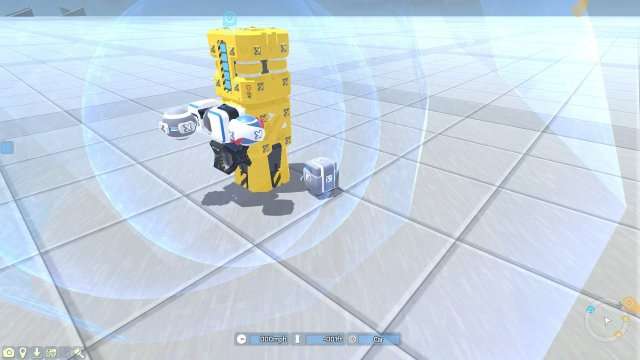
The second to last part of this guide, features some handy information about this games most buggy feature! shields! when they do their job, they stop your blocks taking damage, but please keep in mind that they do not always achieve this and that size is as important as strength or efficiency as it can reduce the overlap bug with explosions.
Shields
GSO
- Size: 4.5 blocks
- Energy Cost: 1.0x
- Activation Cost: 0.2
- Type: Basic
- Cost:
Venture
- Size: 3.5 blocks
- Energy Cost: 0.3x
- Activation Cost: 0.05
- Type: Basic
- Cost:
Hawkeye
- Size: 8.5 blocks
- Energy Cost: 1.67x
- Activation Cost: 0.5
- Type: Resistant Faces
- Cost:
Better Future
- Size: 5.5 blocks
- Energy Cost: 1.33x
- Activation Cost: 0.3
- Type: Resistant Faces
- Cost:
In terms of what a shield is supposed to do, where practical venture shields are almost impenetrable when compared to other shields as they are more efficient, however Hawkeye shields can cover a larger area freeing up space for other blocks, at the cost of a shields durability.
Unfortunately the real mechanics of shields are never taken advantage of due to the shield bug as the only thing that protects against this error is having the explosion further away, achieved by a larger bubble, making Hawkeye shields the only viable option in campaign once GSO reaches level 5 or Hawkeye reaches level 3 (venture level 3 can also provide a problem with small shields).
Please note, all shields have a “passive drain” effect, while in normal play this is not noticed particularly slowly, it should be noted that the battery capacity of a tech should be at least 5 times the activation cost to avoid passive drain making a tech need to constantly recharge as this effect appears to have been made dramatically stronger at some point without being included in patch notes.
Regen Bubbles

Regeneration Fields or bubbles, whatever you want to call them, are an essential part of the game, they make sure you don`t have to replace blocks in your tech constantly and can keep you alive! they are best paired with shields as they can only protect against a low amount of damage without one.
GSO
- Size: 4.5 blocks
- Energy Cost: 0.3 per 1.0 health
- Startup Cost: 0.2
- Regeneration: 0.167/s
- Cost: 1,071
Geocorp
- Size: 9
- Energy Cost: 0.6 per 1.0 health
- Startup Cost: 0.6
- Regeneration: 0.25/s
- Cost: 8,472
Venture
- Size: 3.25 blocks
- Energy Cost: 0.15 per 1.0 health
- Startup Cost: 0.067
- Regeneration: 0.125/s
- Cost: 8,046
Hawkeye
- Size: 7.5 blocks
- Energy Cost: 0.4 per 1.0 health
- Startup Cost: 0.5
- Regeneration: 0.5/s
- Cost: 7,674
Better Future
- Size: 6 blocks
- Energy Cost: 0.3 per 1.0 health
- Startup Cost: 0.35
- Regeneration: 0.33/s
- Cost: 7,485
With repair bubbles, there are a few things that are clear, the venture repair bubble is a complete joke, being one of the worst items in this entire guide, its slow to heal, its tiny, and in practice the energy returns would be outweighed by the sheer number of them to cover a real tech.
While the last three are all useful in their own way, the better future one isn’t worth it, it has a slower regeneration rate than Hawkeye and its also smaller, with a small power gain between them and almost identical prices, the Hawkeye one will generally be what you use for most techs, the better future one will not.
With that said though, the extra size provided by the Geocorp one is definitely worth it, keep in mind these are spheres so the extra radius provided will cover ALOT more blocks, its regen rate is good, though if possible, the Hawkeye ones are better where they can be used, as the cost to sustain and heal on the Geocorp one is vastly inferior.
But the real winner is actually quite unexpected, the GSO one still provides enough regen for under most techs shields to deal with light Shieldbugging, and it comes at 1/7th of the cost of all the others, this paired with its acceptable drain rate (where the other two are very high) i would have to say this is the true winner out of them all, Hawkeye being a close second.
Summary
So what components should i be putting in my tech? well it depends on three things:
- How late are you in the game (early/mid/end).
- Are shieldbugging weapons available to you (if they are for you, enemy techs may spawn in with them).
- Do you have any sort of automated income, or are you on a small budget?
Early game is where your unlocked companies are:
- GSO is 3 or less
- Geocorp is 1 or not unlocked
- Venture is 2 or less
- Hawkeye is not unlocked
- Better Future is not unlocked
Mid game is where your companies are:
- GSO is 4 or less
- Geocorp is 2 or less
- Venture is still 2 or less
- Hawkeye is grade 1 or less
- Better future is at any level (As they do not have Shieldbugging weapons)
Late Game is anything past the above, with that in mind Lets split this into 3 categories.
[Early Game, Low Budget]
- Shield: Venture
- Batteries: GSO (Geocorp as soon as available)
- Charging method: Solar Pannels (GSO) OR A geothermal generator
- Repair Bubbles: Venture (Or GSO)
[Mid Game, Low Shieldbug Weapons Available, Medium Budget]
- Shield: GSO, Better Future or Hawkeye based on cost for your budget.
- Batteries: Geocorp (or Hawkeye if you can afford them and have a small tech)
- Charging Method: Geocorp generators and Carbius (if you can afford this) or a solar farm (GSO)
- Repair Bubbles: Geocorp
[Late Game, Shieldbugging weapons available, High Budget]
- Shield: Hawkeye
- Batteries: Hawkeye if your tech does not have a disposable/Antibug casing, Geocorp otherwise
- Charging Method: Better future solar panels
- Repair Bubbles: Geocorp (Hawkeye on small techs, though these will have limited effect lategame)


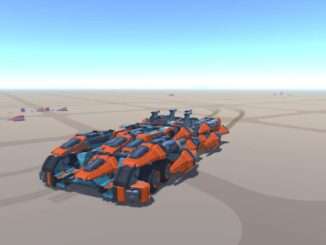
Be the first to comment